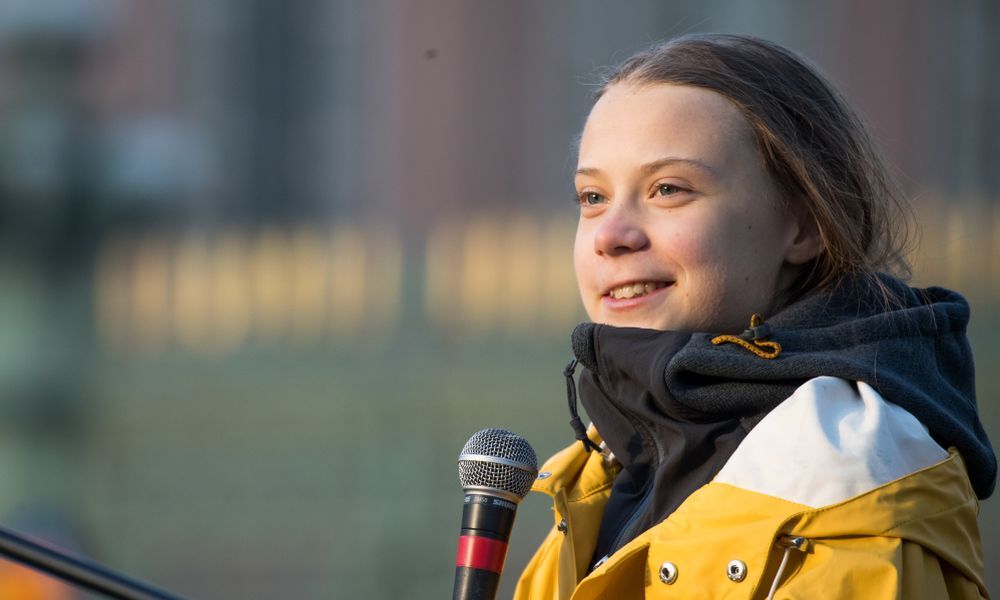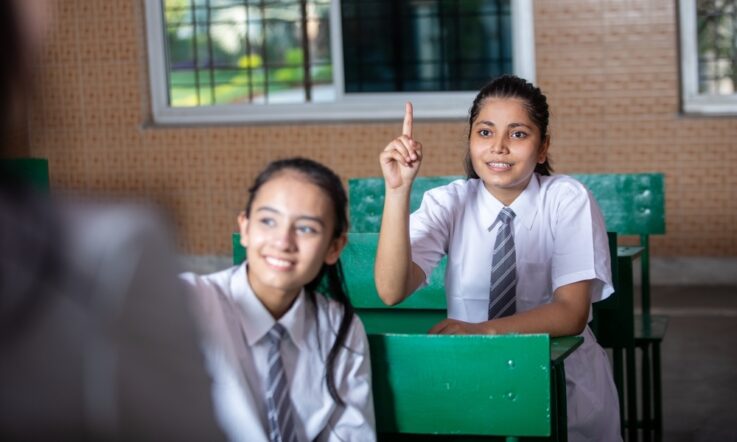Teachers and other educators can play an important role in helping young people to realise their ambitions and to hone their leadership skills. Amy Lightfoot explains how.
Malala Yousafzai and Greta Thunberg are household names around the world. Two young women who – in different ways – have used their right to education to highlight critically important global issues. There can be no doubt that these two individuals are leaders – they are leading thoughts and action not only for people from their own generation but for countless others across many countries, to achieve shared goals for making the world a better place.
It would be unrealistic to expect that all young people can achieve the same as Malala and Greta; however, there are some important lessons that can be learned from the work that they have done.
First, we mustn’t underestimate what young people are capable of doing – whether they are from a small village in rural South Asia or a city in Europe. Second, both girls and boys need support to develop their skills including leadership qualities. Too often, boys are given preference either directly or indirectly for leadership roles. Girls may need more encouragement to come forward, especially in contexts where male leaders dominate in the wider society. Thirdly, teachers and other educators can play an important role in helping young people to realise their ambitions and to hone their skills in this area.
There are countless books, podcasts, and TED talks that describe the qualities of ‘a good leader’, many of which can be applied to young people just as they can to politicians or those managing organisations – perhaps the more typical ‘leaders’ that we can identify.
One interesting project led by Kouzes and Posner focuses specifically on student leadership, and suggests ‘… five practices of exemplary leadership that are common when leaders are able to make extraordinary things happen.’ These practices are: a) modelling the way; b) inspiring a shared vision; c) challenging the process; d) enabling others to act; and e) encouraging the heart.
If you take a moment to reflect on the leadership that either Malala or Greta have shown, it’s quite easy to see how these principles can be exemplified.
A further way of describing leadership is to consider the qualities that leaders display. These often include the ability to listen to others, to empathise, to control or manage emotions appropriately, to remain positive, to stay motivated in order to achieve what they set out to do, and to collaborate effectively with others.
Less effective leaders have been shown to be too controlling, to refuse help or neglect to seek out others’ opinions and ideas, and to lack resilience when faced with obstacles or challenges. All of us will demonstrate each of these characteristics at different times in our lives – both the positive and the negative: the trick is to see how we can cultivate the positive aspects while managing the temptation to default to the negative ones, both for ourselves and our students.
It is important to recognise that leadership is needed and can be displayed in a wide variety of contexts that might be at the micro-level (for example perhaps just in the school playground or during a specific group-work activity), or on a more macrolevel (such as leading a club, the school council, or leading a community or social movement). Each of our students has the potential to lead at all of these levels if they are given opportunities to practise.
In the classroom there are a variety of practical things we can do to support our learners to develop the necessary skills and qualities to enable leadership.
Group work roles
Perhaps the most obvious approach is to consider the different roles that students play when undertaking group work activities. Working together helps to support the development of collaboration, communication, and problem-solving skills, but it can also be a vehicle for practising leadership.
How often do you assign specific roles to students when they are working in groups? Consider the different roles you might ask them to play. These might be reporter, presenter, time manager, and of course, leader. Make these roles a regular feature of your class.
Discuss with your students what skills and practices they need to be good at each one. Then, rotate the roles around the students over the course of your lessons. Ask them to reflect on how well they performed their role, according to the criteria they identified earlier
A project on inspiring leaders
Ask the students to work in pairs and choose a leader they know or about whom they can find out. They might want to choose someone local to the community, or someone who is known more widely – it’s up to them. Ask them to find out and write about what they have achieved but importantly, what qualities they have demonstrated as a leader. What makes them an effective leader? How do they know? Ask the students to present their work to others in the class. Discuss the various qualities that they describe. What are the most common ones? How do they think they might develop these skills themselves?
Set writing tasks to explore leadership skills
Make a regular time in class or set homework once a week where you ask students to write about the different aspects of leadership such as those outlined earlier in this article. You can frame questions such as ‘What does empathy mean to you? Write about a time that you demonstrated empathy’ or ‘Do you think you are good at collaborating with others? Why is this important? Give some examples’.
The aim here is for the students to consider and reflect on their own current practices and skills. Try to read and comment on each piece of writing, but don’t worry about correcting errors. Ask them questions to encourage deeper thinking.
Look for opportunities for older students to practice leading younger ones
Work with the other teachers in your school. See if you can agree to develop a project where older classes work with the younger ones. The older students might also be able to suggest what they can do – perhaps they can practise reading, set up a homework club and answer questions, plan a project or an activity for the younger students to do.
Before they do these activities, ask the older learners what qualities they will need to display in order to be effective and set a good example to the younger students.
A version of this article first appeared in the print magazine Teacher, distributed in India, in March 2020.
References
Kouzes J. & Posner B. (2013). The Student Leadership Challenge. Available online: www.studentleadershipchallenge.com



